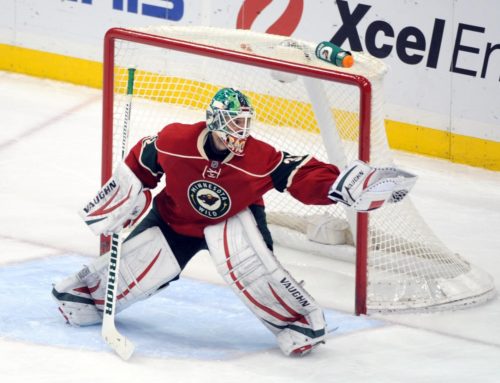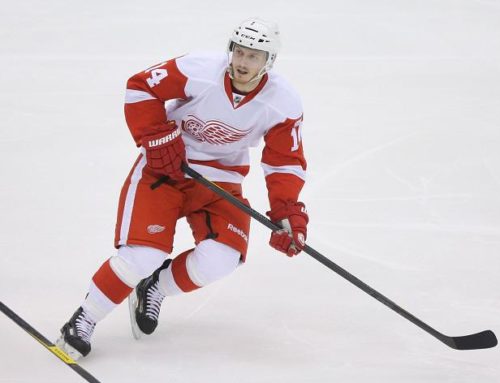
Some tips on how to prepare for your own rebuild…
For the past few weeks, I have detailed how I rebuilt my team and why. During the rebuild, I have had to deal with a wide variety of situations that I wasn't familiar with. Intensifying those situations was the incredible intricacy and depth of my league. There are things that I might have done differently, had I known what I know now.
There are ways of playing the market, and a certain timing to rebuilds that I didn't understand two years ago. Even now that I am entering the contention stage of my own rebuild, I can't help but notice players that I would like to target in a rebuild. My learning is far from over.
Rebuilding To Contention: Part I
Rebuilding to Contention: Part II
Regardless of the specifics of your league and or your rebuild, there are a two guidelines that should always hold true.
Be in it for the long run
If you are reading this site, have played fantasy hockey for a long time, and plan on continuing to play fantasy hockey for years to come… don't put in a half-hearted attempt at a rebuild. There is this idea out there that rebuilding is somehow boring, or unfulfilling. In my experience, the exact opposite is true. In my league, I have acquired Yakupov, Huberdeau, Lack, Lehner, Coyle, Kuznetsov, Hodgson, Eberle, Bobrovsky and Voracek.
Making those trades was pretty exciting. The only listed player that was producing at the time of acquisition was Eberle. My team is full of talent, enough that I can trade blue-chip young assets for proven experience. This will hopefully result in a well-balanced, elite roster. That is pretty fulfilling. I would be getting ahead of myself if I said that I was going to win "not one, not two, not three…" championships, but I have set myself up for multiple shots at a championship.
I recommend setting up a timeline for yourself as a guide. I did, and have followed through so far. The timeline I formed after joining my league included finishing last in my first season, finishing closer to the playoffs the second season, then contending for the title the year after. So far, I have finished last and fourth-last. We shall see about that next part, but any failure to contend will be my own.
There are certainly times when you should abort a rebuild halfway through — perhaps your young players are all over-performing and you were just offered a Malkin or other fantasy superstar — but those are very much the exception rather than the rule. Even if you think that you have a good chance at winning this year, aborting your rebuild early will likely shorten your contention period. Setting up a line of prospects to enter your system, and finding good complimentary pieces is key – it can be the difference between the opportunity to win year in and year out and falling back to square one after a year or two.
Keep in mind that nothing is guaranteed in one year, especially in leagues with playoffs, even the most stacked team can run into a hot goaltender. This applies to any league. I'm looking at you here, Washington Capitals (09-10), Vancouver Canucks (10-11), and Pittsburgh Penguins (12-13).
In a 10-team league, you theoretically "should" win a championship every ten seasons. If done right, a two year rebuild should net you at least a couple of championships. Nothing guarantees a championship for a given year, but over time the wins should start to pile up.
Take advantage of the market
Being in the position of rebuilding offers some underappreciated advantages. If you know that you aren't going to win in the next two seasons, all of a sudden your valuations of different players change dramatically. Many knowledgeable managers follow one variation or another of the "three year rule". When assigning value to a specific player, they mostly take into consideration the next three years of production. This is wise, as projecting much further in advance can get exponentially more difficult.
When you start a rebuild, throw the "three year rule" out of the window. Don't put any value on the next year or two of production. The only exception is if you think that a potential acquisition's value will spike enough in the short-term that you can sell high. All of a sudden, players provide a much different level of value to your team than to other, short to medium term focused, teams. That means you can make deals with your fellow managers in which you both "win". Trust me, those deals are the best ones to make.
Another market advantage you have, depending on your setup, is that you should have at least a couple of "free" spots on your roster. I consider the spot free if a droppable player currently occupies that spot. Since you aren't gunning for a championship, feel free to send Yakupov down to your farm for a while, you don't need the production and the extra spot can do wonders for your team.
With your free spots, cycle through players that may see a jump in production. Try to find the next Moulson or Franson – that player who receives a promotion onto the top line or produces out of nowhere.
Every year there are a handful of surprises that maintain their production for at least the majority of the season. When you do guess right, and the production carries on enough that he has trade value, trade him. You get something for nothing and the chances of that player having enough long term value to make your team two years from now is slim. Cycle through these players as long as you can, you should be able to get quite a bit of value from this.
In some salary cap leagues, adding and dropping players comes at a cost. In other leagues, there are only a certain number of adds/drops allowed in a season. While this limits your ability to cycle, each situation has its own advantages. In both cases, you should advertise yourself as a haven for unproductive players and demand assets from cap/drop strapped teams in return for taking those players.
Easily the most powerful tool at the disposal of a rebuilding team is the ability to trade salary cap space. Unfortunately, it is also the rarest. The vast majority of leagues do not have salary caps, and not all of those that do allow for cap-space trading. If you can trade a certain amount of cap space, trade all that you can. Do research, look at the past cap-trades and use those as a benchmark for your trade discussions. Find out when cap trade value is traditionally the highest (i.e. the beginning of free agency, the start of the year, the trade deadline), and sell then.
It does you no good to have it lying around and can give you tremendous value going forward. In some leagues, it is reasonable to expect five early first round amateur draft picks. Cap space trading is an exceptional equalizer, and can accelerate your rebuild with force.
Each league will have its own quirks, its own set of written and unwritten rules and its own path towards contention. Whatever the circumstances are, use them to your advantage and rebuild your squad to better than it has ever been. It isn't boring at all.
Next time, I will be looking at specific players for a currently rebuilding team to target. If you have suggestions, tweet them to me @austeane or send me an email austeane at gmail dot com.
Previously from Austin:





 EDM
EDM FLA
FLA BUF
BUF ANA
ANA UTA
UTA CGY
CGY NYI
NYI STL
STL
